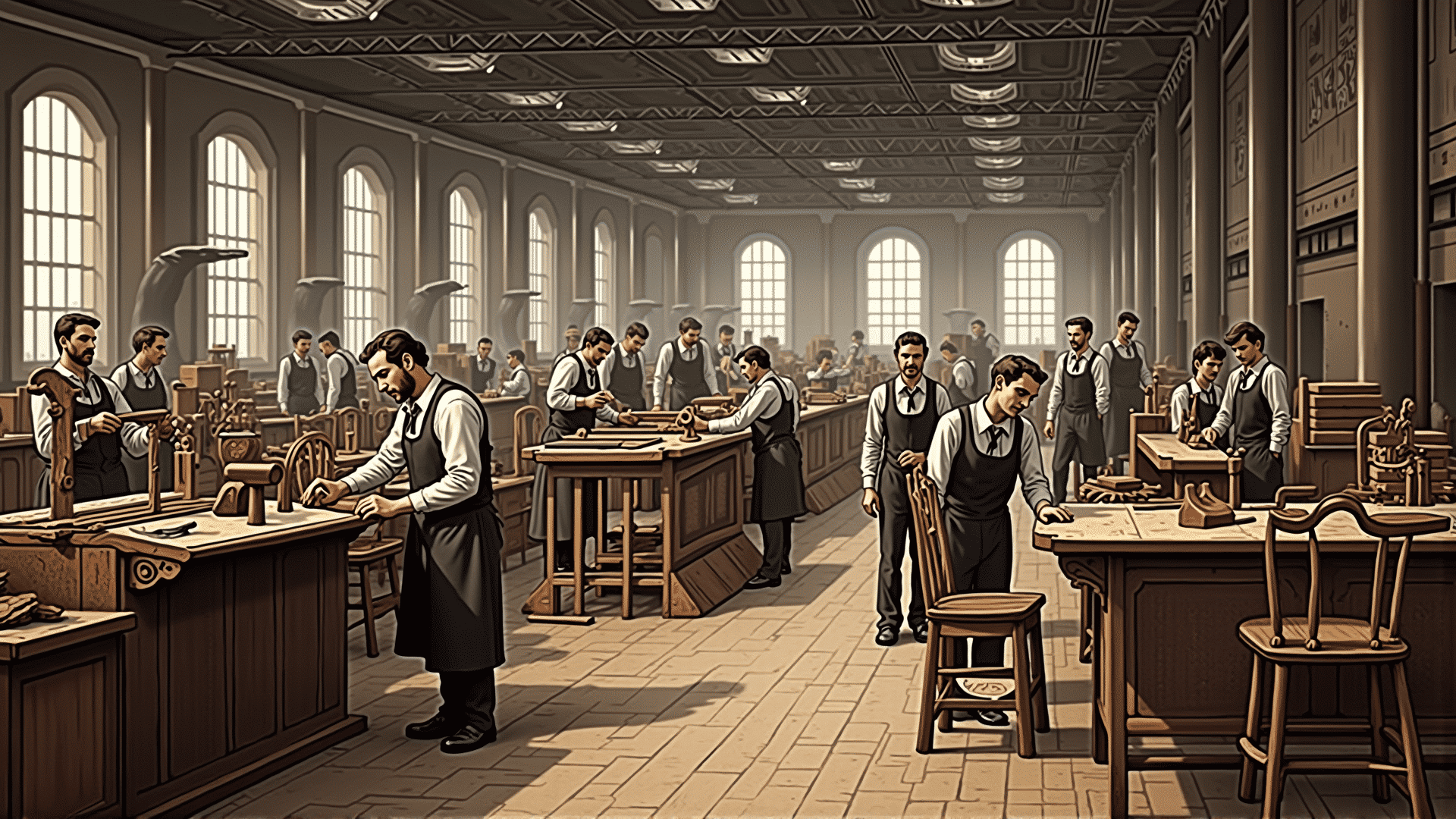The Industrial Revolution marked a turning point in various aspects of life, including the realm of furniture craftsmanship. This era, spanning from the late 18th to the early 19th century, was characterized by the major transformation of manual manufacturing processes into more advanced mechanized systems. The changes in furniture creation during this time were largely driven by innovations in materials and techniques, altering the way furniture was produced and perceived.
One significant shift was the introduction of new materials. Prior to the Industrial Revolution, furniture was primarily crafted from solid wood, which required considerable skill and time. A lack of material variety often led to limited design options. However, the advent of the Industrial Revolution brought about the use of veneers. By applying thin layers of high-quality wood to a more affordable base material, manufacturers were able to produce aesthetically pleasing pieces while conserving expensive wood.
Another material that gained prominence was cast iron, which facilitated intricate yet durable designs. Previously, detailed metalwork in furniture was labor-intensive and costly, but the ability to cast mold adorable iron made it possible to replicate ornate features at scale. Consequently, elements like bed frames and table legs began to exhibit more intricate and decorative designs, in part because of the versatility and strength of cast iron.
Beyond materials, the methods of production saw revolutionary changes. The implementation of steam-powered machinery dramatically accelerated the manufacturing process. Machines such as saws, planers, and lathes allowed for faster, more precise cutting and shaping of materials, significantly reducing production times and costs. This mechanization meant that furniture could be produced in larger quantities, making it more accessible to a broader segment of society.
The industrial era also ushered in the rise of upholstery as a popular choice for seating. With the advent of coil springs, furniture like sofas and armchairs became more comfortable and ergonomic. This innovation was made possible by mechanized techniques that enabled the consistent production and installation of springs. As a result, upholstered furniture became widely popular, offering both comfort and style to the burgeoning middle class.
The craftsmanship of furniture during the Industrial Revolution was further refined by advancements in finishing processes. Chemical developments led to the creation of varnishes and stains that enhanced the appearance and durability of the wood. These finishes allowed artisans and manufacturers to create more refined and polished products, meeting the changing aesthetic preferences of the time.
In summary, the Industrial Revolution brought profound changes to the field of furniture craftsmanship. By introducing new materials such as veneers and cast iron, and leveraging mechanized production techniques, this period laid the foundation for a new era of design and production. These innovations democratized access to elegantly crafted furniture, forever changing the landscape of interior furnishing.
